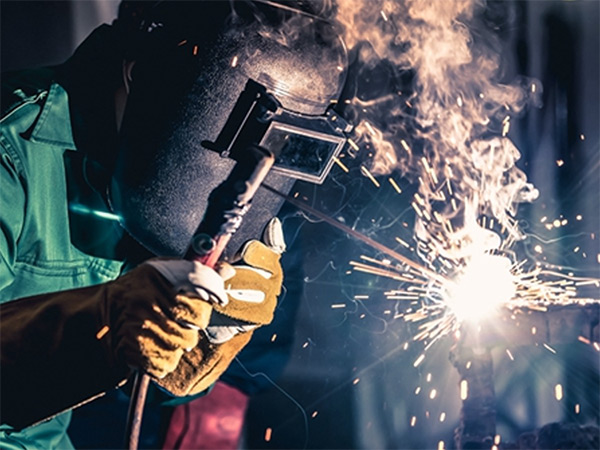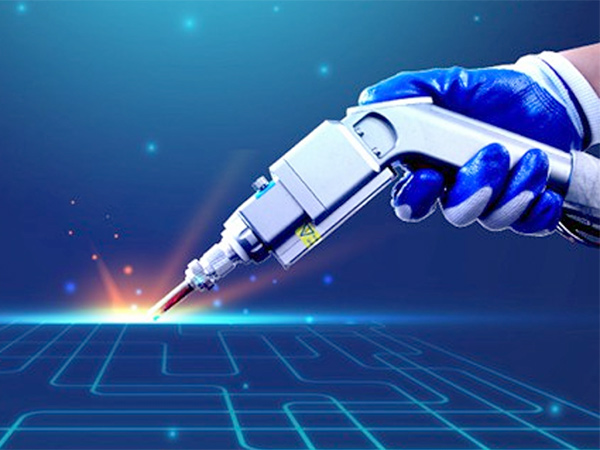Increasing health awareness combined with the strenuous nature of traditional welding has led to its fewer young individuals. Handheld laser welding boasts high efficiency, energy conservation and environmental friendliness, steadily replacing traditional welding methods. Various types of TEYU water chillers are available for cooling welding machines, improving welding quality and welding efficiency, and extending the lifespan of welding machines.
In metal fabrication, welding is a widely used technique for materials like carbon steel, stainless steel, copper, and aluminum alloys. The most common method is arc welding, with welding machines prevalent in factories, workshops, and metalworking shops for various applications like kitchenware, bathroom fixtures, doors, windows, and railings. The market holds millions of welding machines, typically priced at thousands of yuan per set.
Pain Points of Traditional Welding
Hazard from metal fumes: Welding produces metal fumes containing heavy metal elements and compounds. These fine particles can easily be inhaled, causing fibrosis and inflammation in lung tissues, leading to symptoms like breathing difficulties, chest tightness, coughing, and even coughing up blood. Toxic gases generated during welding can also irritate and corrode the respiratory tract and lungs.
Additionally, arc welding emits 3 spectra of light: infrared, visible, and ultraviolet. Among these, ultraviolet light poses the most danger, damaging the eye's lens and retina, leading to conditions like conjunctivitis, cataracts, and vision impairment.
Increasing health awareness combined with the strenuous nature of traditional welding has led to fewer young individuals entering the traditional welding industry.

Handheld Laser Welding Gradually Replaces Traditional Arc Welding
Since its introduction in 2018, handheld laser welding has garnered significant attention and shown exponential growth for several years, becoming the fastest-growing segment in laser equipment. Highly flexible and easy to operate, handheld laser welding offers nearly ten times higher efficiency in continuous linear seam welding compared to arc spot welding, saving considerable time and labor costs. The welding head, initially over 2kg, has now reduced to about 700 grams, minimizing fatigue during extended use and enhancing practicality.
Laser welding eliminates the need for welding rods, significantly reducing the generation of metal fumes and harmful gases, thereby offering relatively better assurance for human health. While producing sparks and intense reflected light, wearing protective goggles effectively safeguards welders' eyes.
The substantial increase in the adoption of handheld laser welding is attributed to declining equipment costs. Currently, mainstream handheld laser welding devices range from 1kW to 3kW in power. Initially priced at over a hundred thousand yuan, these devices have now commonly decreased to over twenty thousand yuan each. With numerous manufacturers, modular configurations, and low user entry barriers, many users have benefited and joined the purchasing trend. However, due to an immature industry chain, the sector has not yet established a robust and healthy development.

Forecast for the Future Development of Handheld Laser Welding
Continuous refinement of handheld laser welding equipment is underway, aiming for smaller size and lighter weight, poised to reach a similar form factor to current small arc welding machines. This evolution will enable direct on-site processing and operations at construction sites.
Laser welding is anticipated to persistently replace traditional welding machines in the market, maintaining an annual demand of over 150,000 units. It will become a more commonly adopted equipment category in the field of metal fabrication. Its versatility, as it doesn't require precision machining, caters to broader market needs, leading to explosive growth. Although there's potential for slight decreases in future procurement costs, they won't match the level of ordinary welding machines priced in the thousands of yuan.
Overall, handheld laser welding boasts characteristics of high efficiency, energy conservation, and environmental friendliness. While steadily replacing traditional welding methods, it enhances overall societal efficiency and environmental performance.
Water Chillers for Welding Machines
Various types of TEYU water chillers are available for cooling welding machines, improving welding quality and welding efficiency, and extending the lifespan of welding machines. TEYU CW-Series water chillers are ideal temperature control solutions for cooling traditional resistance welding, MIG welding and TIG welding. TEYU CWFL-Series laser chillers are designed with dual temperature control functions and are applicable to cool laser welding machines with fiber laser source 1000W to 60000W. Fully considering usage habits, the RMFL-Series water chillers are rack-mounted design and the CWFL-ANW-Series laser chillers are all-in-one design, providing efficient and stable cooling for handheld laser welding machines with fiber laser source 1000W to 3000W. If you're looking for a water chiller for your welding machines, send an email to sales@teyuchiller.com to get your exclusive cooling solutions now!

We're here for you when you need us.
Please complete the form to contact us, and we'll be happy to help you.
Copyright © 2025 TEYU S&A Chiller - All Rights Reserved.